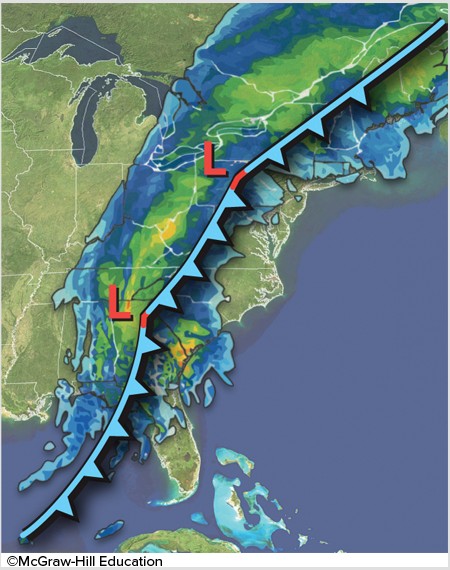Explain positive and negative climate feedback mechanisms and provide an example for each
A positive feedback mechanism is when an initial increase in temperature is reinforced by other processes. An example of a positive feedback mechanism is the water vapor-greenhouse feedback in whereby, if global temperatures rise, water from the oceans rapidly evaporates into the warmer air. The increased quantity of water vapor absorbs more of Earth's infrared energy, thus strengthening the atmospheric greenhouse effect. This strengthening raises the air temperature even more, which, in turn, allows more water vapor to evaporate into the atmosphere. The greenhouse effect becomes even stronger and the air temperature rises even more.
?
A negative feedback mechanism is one that tends to weaken the interactions among the variables rather than reinforce them. For example, the chemical weathering and CO2 feedback mechanisms is a process by which CO2 is removed from the atmosphere as silicate minerals in rocks decompose in the presence of moisture. In this feedback, as chemical weathering increases, the amount of CO2 in the atmosphere decreases. As CO2 levels drop Earth's climate begins to cool and stabilize.
You might also like to view...
Describe some of the measures that are being taken to reduce the problem of acid precipitation.
What will be an ideal response?
Which of the following involves energy storage in the water molecule in the form of latent heat?
A) Melting, evaporation, sublimation B) Freezing, condensation, deposition C) Melting, freezing, condensation, deposition D) Condensation, evaporation, deposition, sublimation
The warm air being lifted in this map is mostly located in the ________ portion of the map.
A. northern B. western C. southern D. eastern
Acid rain usually has a pH value of LESS than ________
What will be an ideal response?